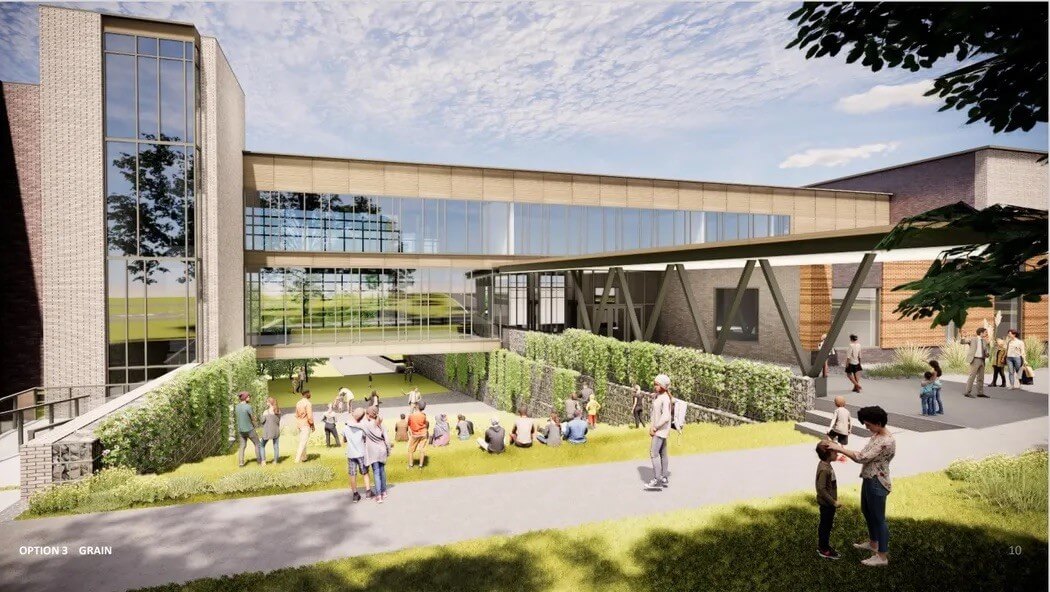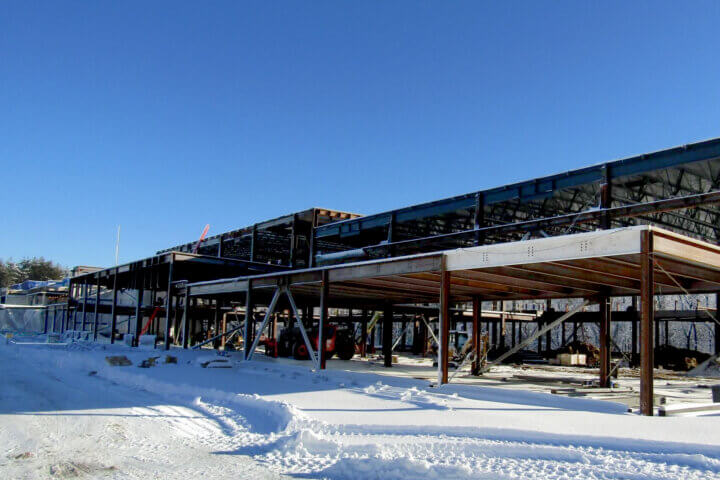As part of the new middle school building project, the municipal light plant is installing solar panels on the roof and parking canopy. On another part of the school grounds, a battery will be erected to store power.
The two installations make up Article 21 on the Town Meeting warrant, seeking $7.5 million which will be funded by electric ratepayers.
The investment in solar energy contributes to the town’s climate goals, according to the light plant board.
“This will add more in-town generation,” said Brian Foulds of the light plant board.
The power from solar panels covering the roof and canopy will exceed the needs of the school and can be stored in the onsite battery.
Foulds said the light plant will own the equipment. The configuration will fulfill the net zero requirement set forth in the building project.
Foulds said the electricity rates will increase by a little over one dollar per month at the outset, with the price decreasing over the following years.
The article calls for a $13 million bond, but Foulds said the smaller battery in the current proposal decreases the cost. The $7.5 million includes the capital outlay and maintenance. When the roof needs to be redone, after 20 years or more, the panels can be lifted off and replaced. The panels have a life expectancy of about 25 years, according to the presentation made to the Finance Committee.
Two incentives contribute to cost containment, Foulds said, including a 25 percent federal incentive as well as potential ARPA (American Rescue Plan Act) funds, although he said “we may not be able to get them in time” as the school building breaks ground this spring.
And, after the 20-year bond is paid off, the town would own the equipment, and not pay an outside company for providing power.
Without the incentives, Foulds said the rate hike would be approximately $1.70 per month the first year, decreasing until 2035.
Non-financial benefits include environmental justice, or not cutting down trees for a ground-based system; educational experiences for students; and providing a parking canopy for cars and buses.
Foulds said other town-owned sites are being evaluated, such as Alcott School.
“All municipal roofs are being looked at,” he said.
“It’s more expensive to do it the way we want,” Foulds said, “but we don’t want to cut down a lot of trees,” which would be required for an array on the ground.
Audience members were, for the most part, enthusiastic about the project.
“It’s an extraordinary step forward,” said Michael McAteer.
“Kudos,” said Kim Slack. He added that the panels seem, from the renderings, close to the baseball field, and wondered if an errant ball might damage a panel.
“Let ‘em play,” responded Foulds. “We will replace the panel.”
Gail Hire said there may be detrimental health effects for students from “electrical noise” with the system on the roof.
Christine Reynolds sought assurance that the battery storage unit would not be a fire hazard.
Dave Wood, light plant director, said a fence will surround the unit, and it has its own fire suppression capability.
“This is so wonderful,” said Pam Dritt.




